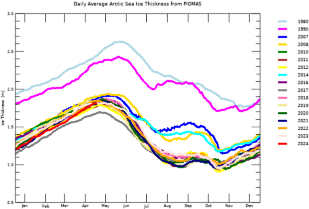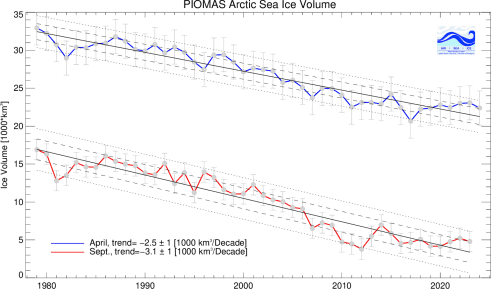Old Rocks
Diamond Member

Fig 4.Average Arctic sea ice thickness over the ice-covered regions from PIOMAS for a selection of years. The average thickness is calculated for the PIOMAS domain by only including locations where ice is thicker than .15 m.

Fig.3 Monthly Sea Ice Volume from PIOMAS for April and Sep.
Polar Science Center » PIOMAS Arctic Sea Ice Volume Reanalysis
Even more significant is the decline in thickness and volume.



 Matthew is still calculating I guess.
Matthew is still calculating I guess.